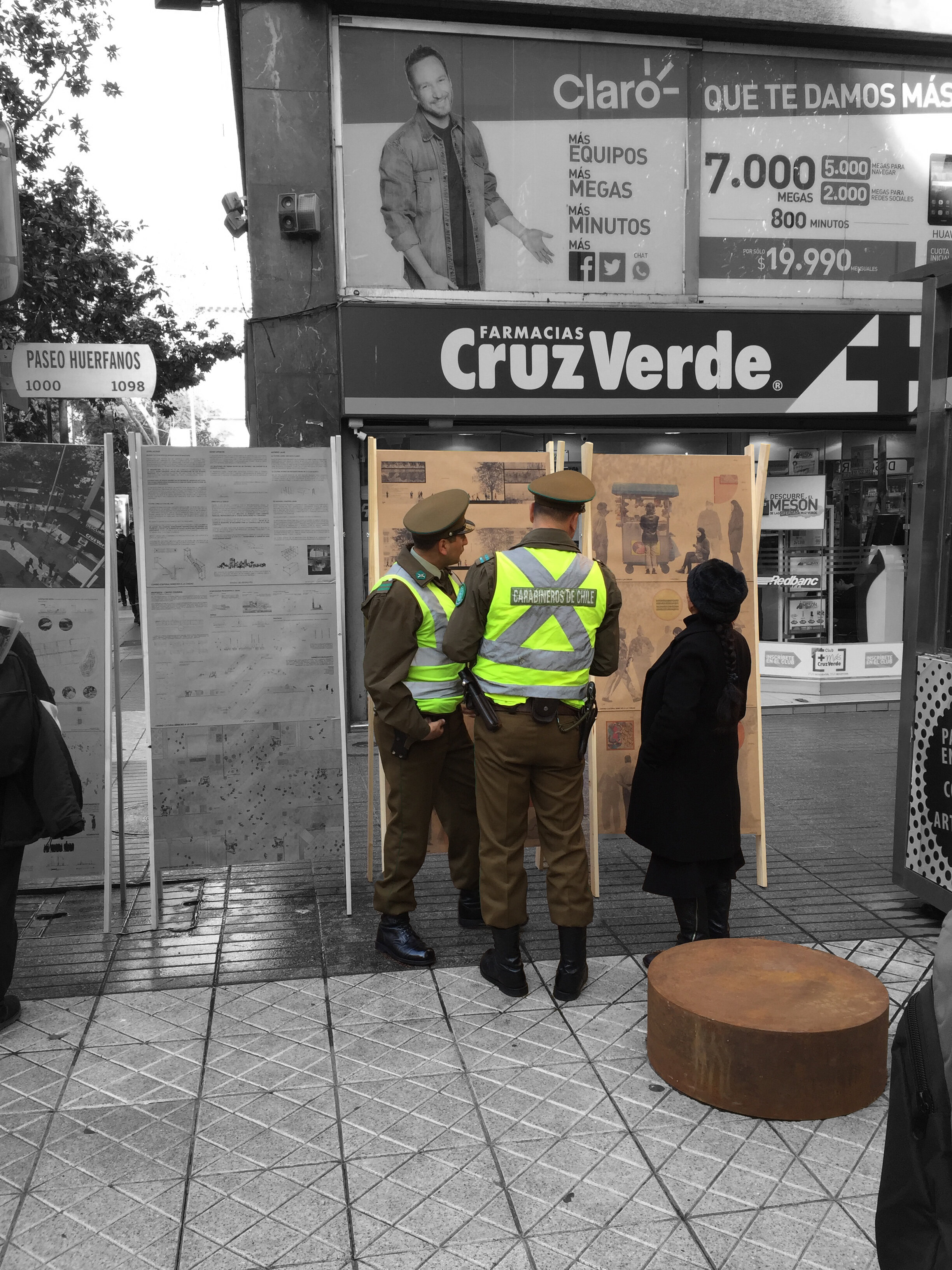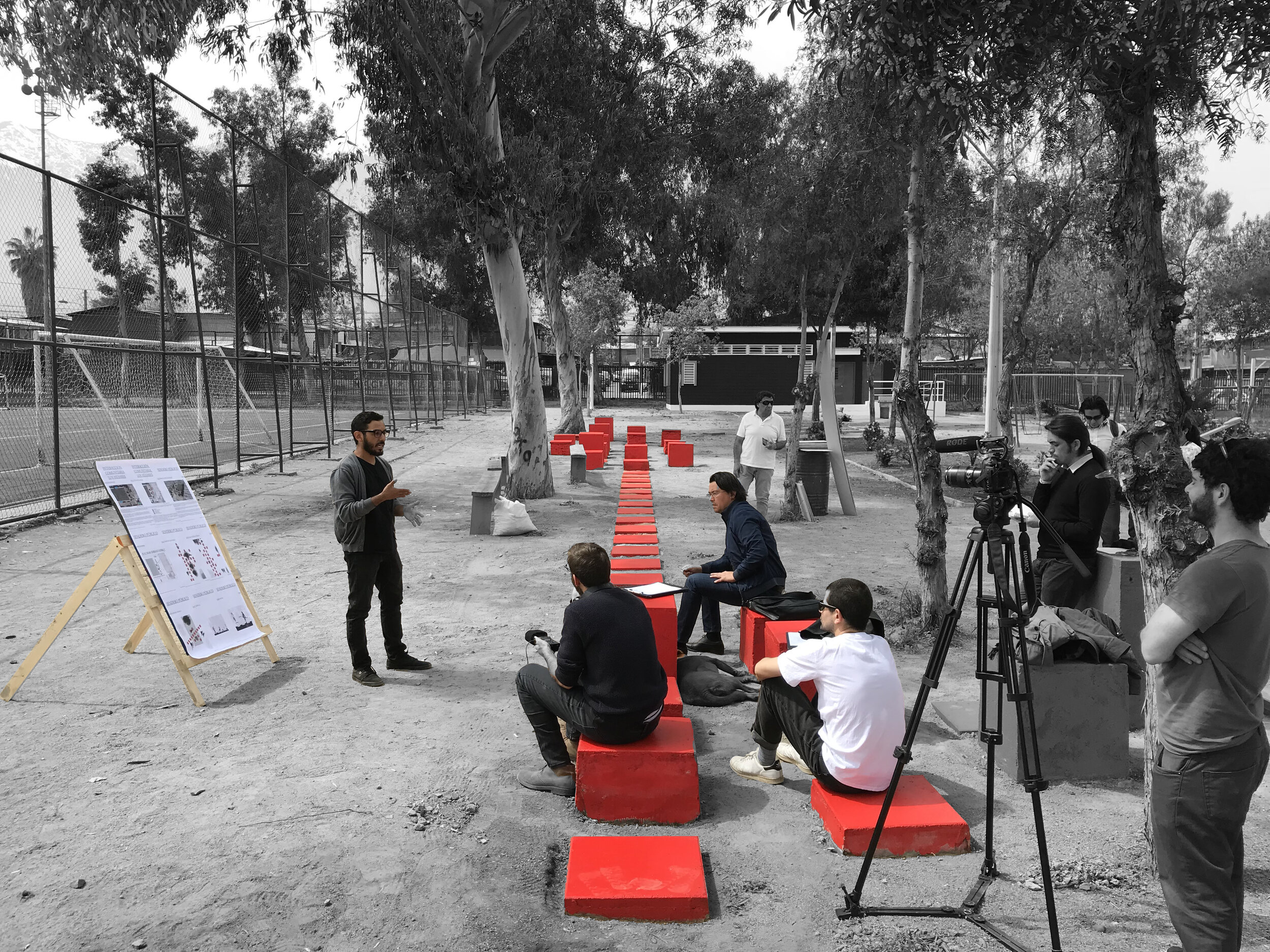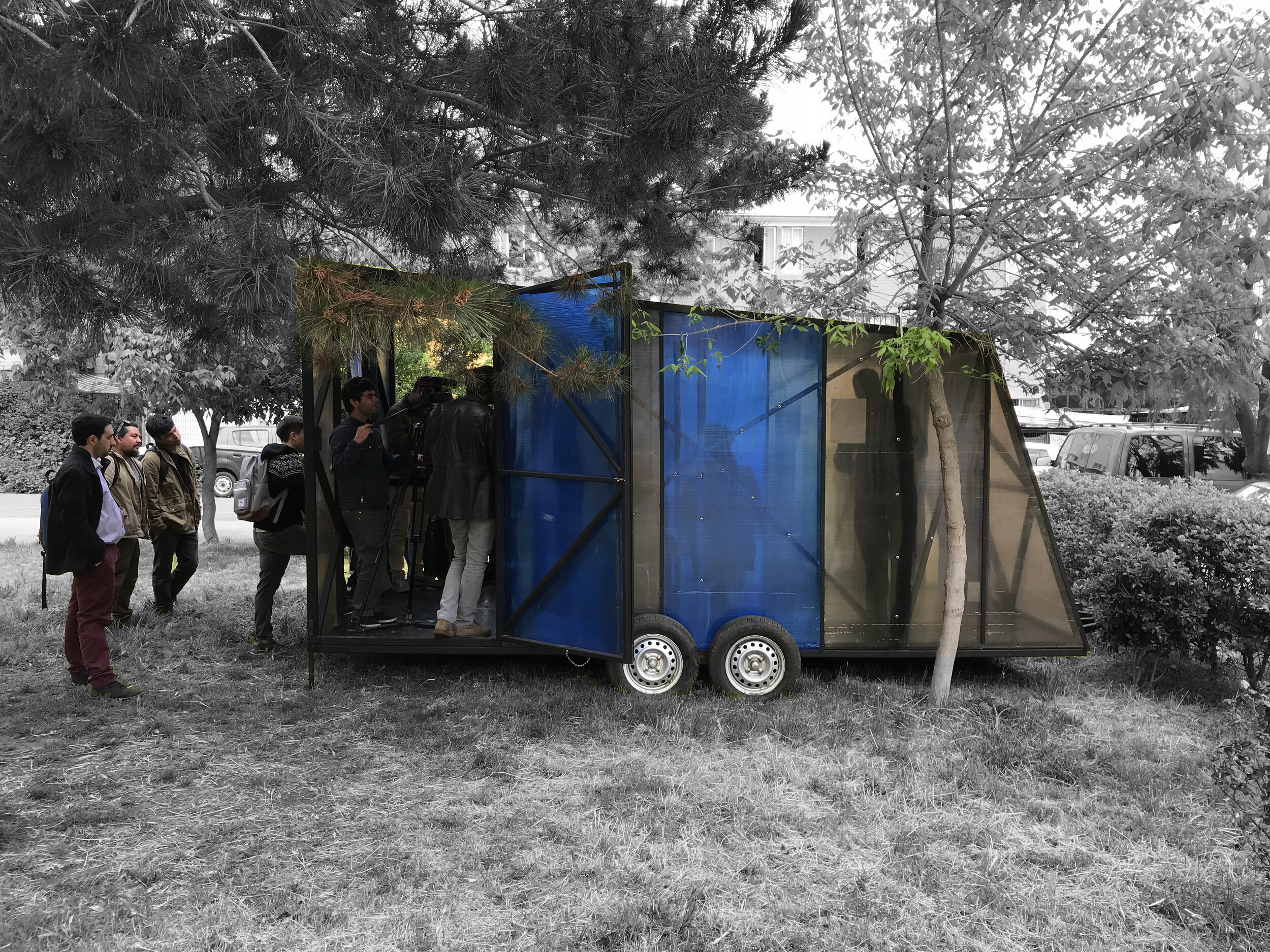Academia as Practice
From Theoretical Frameworks to Frames of Action
by JP Corvalán
ARCHITECTURE’S DISCIPLINARY POLARIZATION
Despite the co-option of architectural outputs by profit-driven interests, it is still possible for architects to address the spatial challenges of the 21st century, such as social inequality and humanity’s unsustainable impacts on the landscape. To reframe architecture’s contribution to society, we could dissolve the perceived
division between academia and practice. Uniting these two realms—the thinking and the doing—may allow architects to better strike the balance between social involvement and professional practice. A new framework, tested in undergraduate curricula at University of the Americas (Universidad de las Américas—UDLA), attempted to integrate academia and practice in hands-on projects that addressed real-world socio-spatial issues.
A common critique of architecture today is that it has lost sight of offering quality living spaces and has, instead, become a vehicle for facilitating accumulation. Uniting academia and practice would both address this critique and break the binary perception of out-of-touch theorists and uncritical practitioners. Furthermore, a unified framework would help architecture meet the demand for a more egalitarian and sustainable society.
Today’s spatial complexity requires transdisciplinary integration and complementary visions across multiple scales. Architecture has seen, through the example of performances and interventions from related disciplines in public realms, an awakening of the possibility to go beyond its institutional walls.
PROPOSAL: A NEW FRAMEWORK FOR ACADEMIC PRACTICE
Instead of a radical alteration of traditional architecture pedagogy, an academic-practice framework gives new life to classic disciplinary tools and agendas, such as studios focused on the production and testing of concrete spatial ideas. At the same time, it puts many other disciplinary conventions under critical review; for example, that architecture can only be created within a client-commission and solo authorship structure. Additionally, integrating academia and practice may lead to unexpected outcomes. For instance, professors may learn more from their students, thereby allowing more evolution within the range of architectural content production and avoiding mere repetition of ideas and forms. In this way, providing students more practical experience offers them a clearer understanding of the possibilities available within professional society.
EXPERIENCE: ACADEMIC PRACTICE IN THE CHILEAN CONTEXT
In response to the growing demand for architecture to engage with social issues, a new project emerged that focused on academia as a critical spatial practice. It evolved through a series of thesis studio projects at several Chilean universities, and culminated in the creation of an interdepartmental academic program at UDLA.
The first phase of the series of built studios served as an introduction to academic practice. Undergraduate students created realistic outputs of their final architecture thesis studio projects by actually building their proposals rather than simulating them on paper. This practical application of academic principles was met with a mix of enthusiasm and rejection—inviting students to leave their comfort zone was painful. However, for those who persisted, the result was rewarding. Students created amazing outcomes: from a nano-public library in Chile’s most in-demand market hall to a Right to the City installation in the most congested square in Santiago. In spite of initial resistance, the course’s first phase proved successful as students began applying their academic learning to practice.
The second phase more broadly integrated academic practice into an official curricular framework. Specifically, the UDLA School of Architecture responded to the initial success of the academic practice program by integrating it into its entire undergraduate curriculum. This invited application of academic methods to the curriculum that provided concrete contributions to underserved urban communities. This
expansion also faced some pushback from both professors and students. Critics argued that this practical approach strayed too far from traditional architecture’s structure of commissions and authorship.
RESULTS: DILEMMAS AND OUTREACH
Aside from the questioning and challenging that inevitably accompany growth, the first generation of students achieved extraordinary results from the Community Intervention Program studio. One critical insight was that the new framework pushed students to take accountability for their projects after they finished: to design for projects’ second life and post-occupancy.
Another outcome, for better or worse, was that many of the projects gave academics a taste of the uncertainty and complexity that real-world projects confront. For instance, after a neighborhood sports facility was privatized to address concerns that it had become a site for child prostitution and drug trafficking, a student proposed a public pathway that would help reopen access to the facility for community members. The most pleasant surprise of the studio, and the most celebrated project by the local community, was a mobile mourning space that became a popular community gathering place.
CONCLUSION: MOVING ONWARD
The success of these early phases demands that we continue to work within academia as practice: exchanging ideas across disciplines to strengthen architects’ capacity to contribute to the dialogues facing social space today. Obviously, this approach of academia as practice is not a panacea. It is not intended to place undue moral obligations on architecture, nor does it expect students to find perfect solutions to all intricate political and social problems.
This initial pedagogical and reflexive experience has brought a sense of awareness not only to future architecture practitioners, but also to professors and researchers working to address the social and spatial conditions facing urban communities. This is a spark for further understanding the limits of a status quo that treats academia and practice as distinct. It is a call to abandon the idea of architecture as a provider of abstract solutions and instead to see it as a tool to provide clearer spatial diagnoses and contribute to transdisciplinary, socially inclusive, and sustainable approaches to urban adaptation.
Imagine the impact that all the intellectual production in architecture schools across the world could have if students applied this framework of academia as practice to raise dialectical questions rather than assume a problem-solving role in real social issues. With this critical-thinking approach, chances are that major breakthroughs would occur. If nothing else, future architects will be better equipped to deal with the complexity of the challenges ahead.

07.22.2016 — In some cases, architecture has the ability to influence and shift—even in an ephemeral way—the social power dynamics of an existing community. The Right to the City Cultural Center intervention was built at the intersection of the two busiest pedestrian walkways in downtown Santiago without any formal permit. Police officers are supposed to take down
appropriations of public space that aren’t formally authorized; here, instead, police converse with passerby, explaining rather than dismantling the intervention. This image is evidence of the potential for architectural interventions to create novel social interactions.
JP Corvalán is an architect with degrees from the Ecole d’Ingenieurs de Geneve, Switzerland; the Facultad de Arquitectura y Urbanismo, Universidad de Chile, Santiago; and the Berlage Institute Rotterdam, The Netherlands. Currently, he is a candidate for a PhD in Geography from the Pontificia Universidad Católica. He is co-founder of Susuka, an architecture studio based in Chile, and Supersudaca, an international collective for urban research. He has worked as an academic at domestic and foreign universities and his work has been published in various international media. He is currently the Director of the Architecture School of Universidad de las Américas (UDLA), Santiago, Chile.



